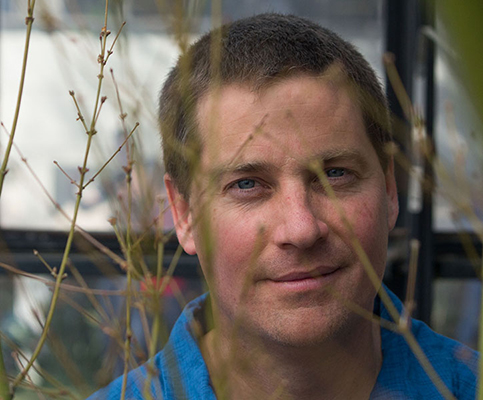Matt Kay
 |
Contact Information: |
| Personal Background I grew up in Santa Barbara where I fell in love with the natural world, from chaparral-covered foothills and backcountry creeks to coastal beaches and nearshore reefs. This passion for natural history led me to the great forests of the Pacific Northwest, where I earned a BS in biology from the University of Oregon. My studies focused on forest biology and mycology, and weekend days in the field were followed by fireside nights reading about the birds, mushrooms, and plants seen that day (it’s amazing what happens in the absence of television…or an organic chemistry textbook…). I went on to earn a Master’s Degree in marine ecology from the University of Oregon’s Institute of Marine Biology, and a PhD in fisheries and marine science from UC Santa Barbara. I continue to explore, study, and adore the natural history of California and beyond.
As a foundation, my courses at SBCC emphasize evolution by natural selection and the
adaptations that organisms possess to survive and reproduce in light of the selective
pressures they face in the environment. Humans are an emerging source of new and intense
selective pressures, and those cannot be ignored by responsible 21st century biologists
and educators. I believe that education nourishes the soul. My view of a successful
student is one who works diligently and is passionate about learning, such that course
material simultaneously excites his/her imagination and fosters a conscientious worldview.
To those ends, students and I work together and enjoy the process. Selected Publications Phillips BF, Melville-Smith R, Kay MC, and Vega-Velazquez A. 2013. Chapter 10: Panulirus Species. Pp. 289-325 in: Lobsters: Biology, Management, Aquaculture and Fisheries 2nd Ed., B. Phillips Editor. Wiley-Blackwell, West Sussex UK. 474 pp. Kay MC, Lenihan HS, Kotchen MJ, and Miller CJ. 2012. Effects of marine reserves on California spiny lobster are robust and modified by fine-scale habitat features and distance from reserve borders. Marine Ecology Progress Series 451:137-150. Kay MC and Wilson JR. 2012. Spatially explicit mortality of California spiny lobster (Panulirus interruptus) across a marine reserve network. Environmental Conservation. Available online: http://dx.doi.org/10.1017/S0376892911000695 Kay MC, Lenihan HS, Guenther C, Wilson JR, Shrout S and Miller CJ. 2012. Collaborative assessment of California spiny lobster (Panulirus interruptus) population and fishery responses to a marine reserve network. Ecological Applications 22:223-235. Beck MW, Brumbaugh RD, Airoldi L, Carranza A, Coen LD, Crawford C, Defeo O, Edgar GJ, Hancock B, Kay M, Lenihan H, Luckenbach MW, Toropova CL, Zhang G. 2011. Oyster reefs at risk globally and recommendations for conservation, restoration, and management. Bioscience 61:107-116. Kay MC, Lenihan HS, Wilson JW and Miller CJ. 2010. The cost of vessel insurance in collaborative fisheries research: Strategies and perspectives from a program in California, USA. California Fish and Game Scientific Journal 96:33-49. Ruesink JL, Lenihan HS, Trimble AC, Hieman AC, Micheli F, Byers JE, and Kay MC, 2006. Introduction on non-native oysters: Ecosystem effects and restoration implications. Annual Review of Ecology, Evolution, and Systematics 36:643-689. Lotze HK, Lenihan HS, Bourque BJ, Bradbury R, Cooke RG, Kay MC, Kidwell S, Kirby MX, Peterson CH, Jackson JBC, 2006. Depletion, degradation, and recovery of estuaries and coastal seas worldwide. Science 312:1806-1809. Kay MC and Emlet RB, 2002. Laboratory spawning, larval development, and metamorphosis of the limpets Lottia digitalis and Lottia asmi (Patellogastropoda: Lottiidae). Invertebrate Biology 121:11-24. Kay MC, 2002. Recruitment in the intertidal limpet Lottia digitalis (Patellogastropoda: Lottidae) may be driven by settlement cues associated with adult habitat. Marine Biology 141:467-477. |
|